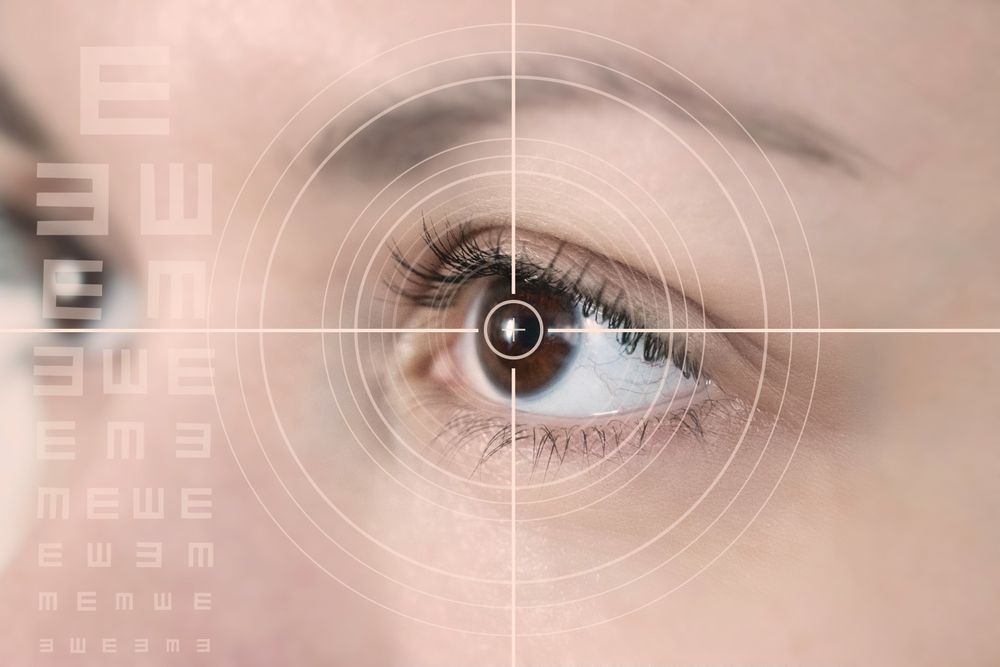Astigmatism is one of the most common vision problems worldwide and a frequent concern among individuals considering vision correction procedures like LASIK. While often misunderstood, astigmatism simply refers to an imperfection in the curvature of the eye, which leads to blurry or distorted vision. In Greenwood Village and Denver, CO, patients seeking clarity on LASIK and its effectiveness in treating astigmatism often turn to experienced professionals like Dr. Abed Namavari at Colorado Eye Clinic. Understanding how LASIK works and how it can address astigmatism is a critical first step toward making an informed decision about vision correction.
What Is Astigmatism?
Astigmatism occurs when the cornea—the clear front surface of the eye—is shaped more like a football than a basketball. Instead of having a symmetrical curve that bends light evenly onto the retina, the cornea has an irregular curvature, causing light to focus unevenly. This leads to blurred or distorted vision at all distances. Astigmatism may occur in conjunction with other refractive errors, such as myopia (nearsightedness) or hyperopia (farsightedness).
There are two primary types of astigmatism: corneal and lenticular. Corneal astigmatism is caused by an irregularly shaped cornea, while lenticular astigmatism stems from imperfections in the lens inside the eye. While both can affect vision, LASIK specifically targets corneal astigmatism by reshaping the surface of the eye. Mild to moderate levels of astigmatism are commonly treated with glasses or contact lenses, but for those seeking long-term correction, LASIK offers a surgical alternative.
How LASIK Corrects Astigmatism
LASIK, or Laser-Assisted In Situ Keratomileusis, works by reshaping the cornea using a highly precise laser. During the procedure, an ophthalmologist creates a thin flap in the outer layer of the cornea, lifts it, and then uses an excimer laser to remove microscopic amounts of corneal tissue. This process changes the shape of the cornea to allow light to focus correctly on the retina, thereby improving vision.
When treating astigmatism, the laser is programmed to address the specific irregularities in the corneal shape. Unlike older vision correction procedures, modern LASIK technologies such as wavefront-guided and topography-guided systems offer highly customized treatments tailored to the unique curvature and optical imperfections of each eye. This precision makes LASIK an effective option for correcting astigmatism and enhancing overall visual clarity.
The correction of astigmatism using LASIK is not only possible but routinely performed with high success rates. However, achieving optimal results depends on accurate diagnosis, careful planning, and proper candidacy evaluation by an experienced eye doctor or ophthalmologist.
Evaluating Candidacy for LASIK with Astigmatism
Not all patients with astigmatism are candidates for LASIK, which is why a comprehensive eye exam is essential. Factors that determine eligibility include the degree of astigmatism, the thickness and health of the cornea, pupil size, overall eye health, and whether the individual’s vision prescription has remained stable for at least one year.
Mild to moderate astigmatism is generally considered treatable with LASIK, whereas very high levels of astigmatism may require alternative procedures such as photorefractive keratectomy (PRK) or implantable lenses. Additionally, patients with conditions like dry eye syndrome, keratoconus, or other corneal abnormalities may not qualify for LASIK and should explore different treatment avenues.
Ophthalmologists also assess lifestyle factors and long-term vision goals. Individuals who have jobs or hobbies that depend on sharp vision without corrective lenses may find LASIK particularly appealing. However, it’s important to have realistic expectations—while LASIK can greatly reduce or eliminate the need for glasses or contacts, perfect vision is not guaranteed in every case.
What to Expect During and After the Procedure
The LASIK procedure itself is typically quick and painless, often lasting less than 30 minutes for both eyes. Patients are awake but receive numbing eye drops to prevent discomfort. A femtosecond laser creates the corneal flap, which is then lifted to allow the excimer laser to reshape the underlying corneal tissue. Once the reshaping is complete, the flap is repositioned and begins to heal without the need for stitches.
Following the procedure, patients may experience mild discomfort, tearing, or sensitivity to light for the first 24 to 48 hours. Vision may be blurry at first but generally begins to stabilize within a few days. Most individuals return to work and regular activities within a week, although strenuous activity and eye rubbing should be avoided during the initial recovery phase.
For those with astigmatism, LASIK results can be particularly gratifying. Many patients notice a dramatic improvement in both distance and intermediate vision. Follow-up visits with an eye doctor ensure that healing is progressing as expected and that the corneal surface remains stable. Enhancements or adjustments are rare but may be recommended in some cases where residual astigmatism remains.
Potential Risks and Limitations
While LASIK is widely regarded as safe and effective, it’s important to understand that no surgical procedure is entirely without risk. Potential complications, though rare, may include dry eyes, glare or halos around lights at night, undercorrection or overcorrection, and infection. Most of these side effects are temporary and resolve with proper care and time, but patients should be fully informed before undergoing surgery.
Individuals with severe or irregular astigmatism may not achieve the same level of correction as those with lower degrees. Additionally, while LASIK can significantly reduce dependence on glasses or contact lenses, it does not prevent natural age-related vision changes such as presbyopia, which affects near vision in people over 40.
Proper patient selection and pre-operative screening by an experienced ophthalmologist are essential in minimizing risks and ensuring the best possible outcome. Patients are encouraged to ask questions and discuss any concerns before deciding to move forward with surgery.
LASIK Alternatives for Astigmatism
While LASIK is a popular option, it is not the only vision correction procedure for astigmatism. Depending on individual circumstances, an ophthalmologist may recommend alternative treatments such as PRK, small-incision lenticule extraction (SMILE), or implantable contact lenses (ICLs). PRK, for example, offers similar results to LASIK but involves removing the surface layer of the cornea instead of creating a flap, which may be better for patients with thin corneas.
Toric intraocular lenses (IOLs), commonly used during cataract surgery, can also correct astigmatism. These may be appropriate for older adults or those with lens-related vision changes. The choice of procedure depends on a range of clinical factors, as well as patient preferences and lifestyle needs.
An in-depth consultation with a skilled eye doctor ensures that the selected treatment is both safe and suited to the individual’s visual profile. Understanding all available options can help patients feel confident in their decision.
Conclusion
LASIK offers a proven, precise method for correcting astigmatism and enhancing visual clarity for suitable candidates. With advances in laser technology and a deeper understanding of corneal anatomy, many individuals with mild to moderate astigmatism can achieve long-lasting results through this procedure. For those in Greenwood Village and Denver, CO, guidance from a knowledgeable ophthalmologist like Dr. Abed Namavari at Colorado Eye Clinic is invaluable in exploring the best approach for achieving clearer, more reliable vision.
Resources:
- Reinstein, D. Z., Gobbe, M., Archer, T. J., Couch, D., & Bloom, B. (2010). LASIK for the correction of high degrees of astigmatism. Journal of Refractive Surgery.
- Alió, J. L., & Belda, J. I. (2002). Correction of astigmatism with LASIK: Outcomes and limitations. Ophthalmology Clinics of North America.
- Hersh, P. S., Brint, S. F., Maloney, R. K., Durrie, D. S., Gordon, M., Michelson, M. A., … & Assil, K. K. (1998). Photorefractive keratectomy versus laser in situ keratomileusis for moderate to high myopia: a randomized, prospective study. Ophthalmology.

